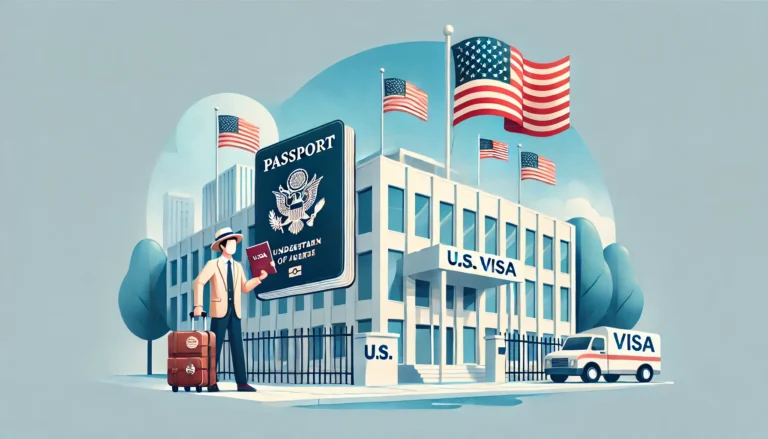Cultural Etiquette for Visitors What You Should Know
Introduction
Understanding cultural etiquette is key to enjoying a respectful and enriching travel experience in the United States. While the U.S. is known for its diversity and openness, there are general customs and practices that visitors should keep in mind to navigate social interactions smoothly. Here’s what you need to know about American cultural etiquette.
Cultural Etiquette for Visitors What You Should Know
1. Greetings and Personal Space
- Greetings: A firm handshake is standard when meeting someone new, especially in formal settings. In more casual situations, a simple “Hello” or “Hi” suffices.
- Personal Space: Americans tend to value personal space. Standing too close can make people uncomfortable, so aim for about an arm’s length distance.
- Eye Contact: Making eye contact is considered polite and shows attentiveness, though staring can be perceived as impolite.
Tip: Smiling is common, even among strangers, and a friendly nod or smile is often appreciated.
2. Politeness and Conversation Etiquette
- Use of “Please” and “Thank You”: Saying “please” when making requests and “thank you” when receiving help is essential. Manners are appreciated across all social interactions.
- Topics to Avoid: Avoid bringing up sensitive topics such as politics, religion, and personal finances, especially with people you’ve just met.
- Small Talk: Americans often engage in small talk (light, polite conversation) with acquaintances and strangers. Talking about the weather, sports, and travel are all safe topics.
Tip: Punctuality is valued, so if you’re meeting someone, aim to be on time or let them know if you’re running late.
3. Dining Etiquette
- Table Manners: Keep your hands in your lap when you’re not eating, and avoid talking with your mouth full. In formal dining settings, wait until everyone has their food before starting to eat.
- Tipping: Tipping is customary in the U.S. It’s common to tip between 15-20% in restaurants. Tips are also expected for taxi drivers, baristas, and hotel staff.
- Splitting the Bill: “Going Dutch” (splitting the bill) is common among friends and acquaintances, but it’s polite to clarify this before the meal starts.
Tip: In casual dining places, it’s normal to bus (clear) your own table if the restaurant has self-service.
4. Respect for Personal Boundaries and Privacy
- Asking Personal Questions: Avoid asking personal questions about someone’s salary, age, marital status, or weight, as these can be seen as intrusive.
- Touching and Physical Affection: Americans generally reserve hugs for close friends and family. In professional or casual settings, refrain from physical affection unless it’s welcomed.
- Respecting Homes: It’s usually polite to ask if you should take off your shoes when entering someone’s home, as customs vary from family to family.
Tip: Asking about someone’s family, hobbies, or work can be good conversation starters without invading personal boundaries.
5. Dressing Appropriately for the Occasion
- Casual Dress Code: The U.S. is generally casual, especially in daily wear. However, it’s best to dress a bit more formally when going to work, certain restaurants, or events.
- Business Casual for Work: Many workplaces follow a “business casual” dress code, where employees wear attire that’s polished but not overly formal.
- Cultural Sensitivity: Dress codes may vary depending on the region. When visiting religious sites, research if any specific dress is required.
Tip: When in doubt, it’s safer to dress modestly or conservatively.
6. Respecting Diversity and Inclusivity
- Embracing Diversity: The U.S. prides itself on diversity, so it’s important to approach different backgrounds and perspectives with respect. Avoid generalizations and stereotypes.
- Inclusive Language: Be mindful of the language you use, as derogatory terms or jokes about race, gender, or religion are inappropriate and often offensive.
- Support for Disabilities: Many public places are accessible for people with disabilities, and being respectful towards everyone, including individuals with disabilities, is highly valued.
Tip: Using people’s preferred pronouns or names shows respect for their identities.
7. Queueing (Lining Up) Etiquette
- Waiting in Line: Americans expect people to form orderly lines and wait their turn. Cutting in line is seen as rude.
- Personal Space in Line: Stand at a respectful distance from the person in front of you when waiting in line.
Tip: If unsure, ask others politely where the end of the line is before joining.
8. Phone and Electronic Device Etiquette
- Phone Use in Public: Keep phone conversations at a low volume in public spaces and avoid using speaker mode. In social settings, avoid constantly checking your phone.
- Photography: Respect privacy by not taking photos of strangers without permission. When in museums, galleries, or other restricted areas, check if photography is allowed.
Tip: Silence or put your phone on vibrate when in quiet public places like libraries, theaters, or museums.
9. Environmental Etiquette
- Clean Up After Yourself: Americans value cleanliness in public spaces. Dispose of your trash in designated bins and try to leave areas as clean as you found them.
- Recycling: Many places have recycling bins alongside trash bins. Follow the sorting guidelines to help the environment.
- Outdoor Spaces: When visiting national parks or outdoor attractions, follow “Leave No Trace” principles to preserve natural beauty.
Tip: If you’re at a beach, park, or trail, bring your trash bag to clean up after yourself.
10. Respecting Public and Private Property
- Graffiti and Vandalism: Defacing public or private property is illegal and considered disrespectful. Respect signs, boundaries, and posted rules in public spaces.
- Respect for Flags and Symbols: In the U.S., the American flag is a national symbol, and showing respect towards it is appreciated. Avoid defacing or using it improperly.
Tip: If you’re in a place with historic or cultural significance, follow all guidelines for behavior and etiquette.
Conclusion
Understanding and respecting American cultural etiquette will help you feel more at ease and avoid misunderstandings during your travels. Practicing kindness, politeness, and respect for diversity will go a long way in making your interactions pleasant and memorable. Remember, while there are general customs, each person may have their own preferences, so when in doubt, a polite question goes a long way. Enjoy your travels and the diverse experiences the U.S. has to offer!




